Home
Recent Highlights
Objectives
Research themes
Training opportunities
How to apply
Investigators
Collaborators
Partners
Students
Post-doctoral fellows
Ph.D. students
M.Sc. students
Undergraduate
Completed
Seminars
Program management
Annual meetings
Contact us
Recent Highlights
Objectives
Research themes
Training opportunities
How to apply
Investigators
Collaborators
Partners
Students
Post-doctoral fellows
Ph.D. students
M.Sc. students
Undergraduate
Completed
Seminars
Program management
Annual meetings
Contact us
Contact information:
Ms Yella Jovich-Zahirovich
Project Coordinator
Tel. 514-398-7824
Fax. 514-398-7990
Dr. Lyle Whyte
Principal Investigator
Tel. 514-398-7889
Fax. 514-398-7990
NSERC CREATE
Canadian Astrobiology Training Program
Canadian Astrobiology Training Program

Canadian Astrobiology Training Program (CATP)
Ph.D. candidates - To see a picture of the candidate place your cursor on their name
| Name | Institute | Supervisor | Research area |
Trevor Brisco
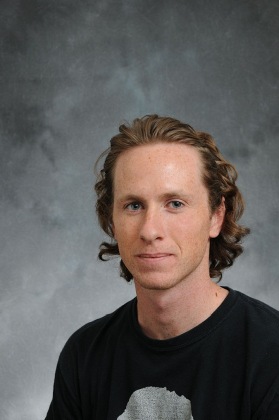 Isabelle Raymond-Bouchard |
University of Toronto |
Barbara Sherwood Lollar |
My research focuses on investigating source and flux of H2 and CH4 in a range of geologic terrains relevant to serpentinization, including Jurassic kimberlites in northeastern Ontario, Ordovician ophiolites in the Quebec Appalachians, and Precambrian deep subsurface ultramafics in Timmins and Red Lake Ontario. It is anticipated that this research will: (1) help to develop a more accurate global model for H2 and CH4 flux from geologic systems and ultimately help resolve the origin of CH4 reportedly found in the atmosphere of several planets and moons within our solar system; and (2) contribute to a better understanding on the nature and distribution of reduced gases in the Earth’s deep subsurface and the potential for these environments to sustain H2-utilizing microbial communities on both Earth and on other planets such as Mars. |
Jesse Colangelo-Lillis
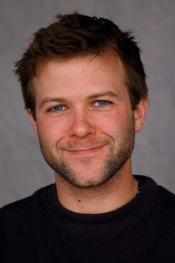 Jesse Colangelo-Lillis |
McGill University |
Dr. Boswell Wing and Dr. Lyle Whyte |
I am broadly interested in the evolution and diversity of of microbial life and how the study of such will constrain its history on earth and ability to persist (or even thrive) in environmental regimes characteristic of other solar bodies. I am working with Drs. Wing and Whyte, and specifically looking at evolutionary facets of microbial metabolism. With Dr. Wing this manifests in explorations of forcings on dissimilatory sulfur reduction and fractionation, and with Dr. Whyte in explorations of phage-host dynamics in cold-environments. These endeavors are primarily pursued via microbial culture lab work and bioinformatic tools. |
Peter Crockford
 Isabelle Raymond-Bouchard |
McGill University |
Boswell Wing |
The nadir of the Proterozoic Eon is punctuated with perhaps the most dramatic climatic changes in Earth’s history, with fluctuations between snowball episodes and extreme greenhouse events. Shortly after these episodes, fossil evidence for the first multicellular macroscopic animal life appears within the sedimentary record. Given the evolutionary significance of the Neoproterozoic Era (1000 – 543 million years ago), it is remarkable that our understanding of biogeochemical cycles and environmental variability over this period is relatively poor, compared to the Phanerozoic Eon. In particular, while paleo-environmental records are available for the chemistry of the marine realm, proxies for the composition of the paleo-atmosphere and temperature of the paleo-ocean are much more elusive. My work aims to constrain environmental variables by taking a fresh look at the sedimentary record with new techniques in isotope geochemistry. |
Raymond Francis Raymond Francis |
University of Western Ontario |
Dr. Gordon Osinski and Dr. Ken McIsaac |
I'm working to develop vision systems to enhance planetary exploration, with a focus on technologies that support astrobiological investigations. Lidar and advanced stereo camera systems provide the potential for greatly increasing the science return from landed platforms on Mars, the Earth's moon, and other planetary bodies. Advanced vision systems can greatly increase the rate at which mission scientists can interpret the geological environment, be it from high-resolution terrain and texture models, spectroscopic data linked to topography and imagery, or automatic processing of large imaged datasets to automatically identify targets of interest. The goal is to find ways of better identifying interesting targets, synthesizing the understanding of the local geology across multiple scales, and making more efficient use of time and resources in choosing targets. In particular, techniques can be developed specifically to search for microbialites, hydrothermally-altered minerals, or features of interest in terms of habitability. Overall, the intent is to develop versatile systems that can be used in multiple environments, to provide valuable elements of upcoming missions in planetary exploration. |
Jacqueline Goordial Jacqueline Goordial |
McGill University |
Dr. Lyle Whyte |
I will be examining the microbial life of University Valley in the Upper Dry Valleys of the Antarctic. I'm interested in looking at the structure and diversity of the microbial communities, as well as the metabolic activity which could be taking place under sub-zero temperatures. The Upper Dry Valleys of the Antarctic are an important and unique analog for the polar regions of Mars since they are the only place on Earth where there is a layer of dry soil overlaying permanently frozen ground (permafrost). Similar to the Martian atmosphere, the air is very dry and the ice-table depth is governed by water vapour diffusion, rather than liquid water. This research will create a profile of the microbiology of the only terrestrial analog site for the North polar ground-ice of Mars, similar to the Phoenix landing site and the proposed site of a future sampling mission. |
Tanya Harrison
 Tanya Harrison |
University of Western Ontario |
Dr. Gorodon Osinski |
My work focuses on bridging the gap between science and engineering in the case of cameras for planetary missions and astrobiology. Terms such as "2 metres per pixel" do not necessarily convey to scientists what can be done at that image resolution. Using aerial imagery acquired from balloons, I intend to demonstrate the need and usefulness of ultra-high (>5 m/pixel) resolution imaging in planetary geology and astrobiology by showing examples of the qualitative and quantitative geology that can be done at varying resolutions. |
Chris Nicol Chris Nicol |
Carleton University/University of Winnipeg |
Dr. Alex Ellery and Dr. Ed Cloutis |
I am working on computer vision algorithms which can increase the amount of information we can detect in potential science targets using visible and IR spectra. There are many metrics which are useful in the classification problem for geological targets. My research will develop algorithms which provide more useful metrics for classification. As a classification and targeting solution can provide the most impact on the science mission if targets are identified form far distances, the change in confidence of the results of each algorithm will be assessed. Knowing the confidence in the measurements will provide for more robust confidence measures in the classification problem, in addition to providing another input for mission planning algorithms deciding the whether to deviate course to visit these potential targets. |
André Pellerin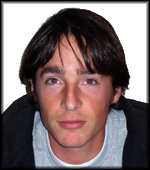 André Pellerin |
McGill University |
Dr. Boswell Wing |
Microorganisms induce the fractionation of isotopes through their metabolic processes. This produces characteristic isotopic depletions and enrichments in microbial substrates and wastes. Current interpretations of the isotopic record present in early Earth rocks are based on the isotopic signatures produced by microorganisms today. However, an apparent contradiction may underlie these biogeochemical studies: How does isotopic fractionation, and by inference, microbial metabolism stay steady through billions of generations of microbial reproduction? I am investigating the implications of evolution on isotopic signatures that are used to infer the presence of microorganisms on early Earth. |
Isabelle Raymond-Bouchard
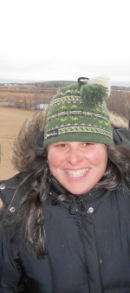 Isabelle Raymond-Bouchard |
McGill University |
Dr. Lyle Whyte |
I am interested in elucidating the molecular traits underlying cold tolerance in cryophilic microbes isolated from Arctic cryoenvironments. Specifically, I will be looking to characterize several new permafrost bacteria using genomic, transcriptomic, and phenotypic analyses. Dr Whyte’s laboratory has recently characterized a halophilic cryophile capable of growth at the lowest temperature recorded to date, -15 °C. I will be carrying out proteomics analysis on this organism to identify the proteins and metabolic pathways active in subzero and high salt growth conditions. As well, I will be looking to determine solute composition and concentration necessary for osmotic balance in high salt and subzero conditions. |
Jessica Stromberg
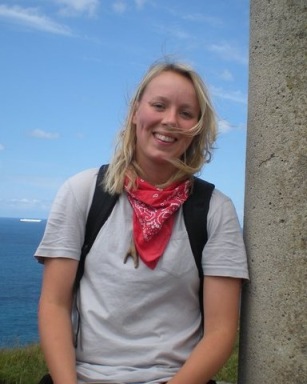 Isabelle Raymond-Bouchard |
University of Western Ontario |
Neil Banerjee |
Characterizing Archean paleoenvironments is integral to our understanding of Earth’s early history, the evolution of life on Earth, as well as the potential for past life on Mars and interpretations for evidence of it in the diagenetic record. I am interested in understanding these environments using the Archean rock record to look for evidence of life and paleoconditions. Presently, I am studying a set of ~2.7 billion year old carbonate veins at the Dome Mine in Timmins, Ontario which represent an ancient sub-seafloor hydrothermal system. As well as constraining the larger scale depositional environment and local geochemical conditions of the system, I am characterizing its organic content to look for organic biomarkers. |
©2009 L. Whyte & CATP All Rights Reserved